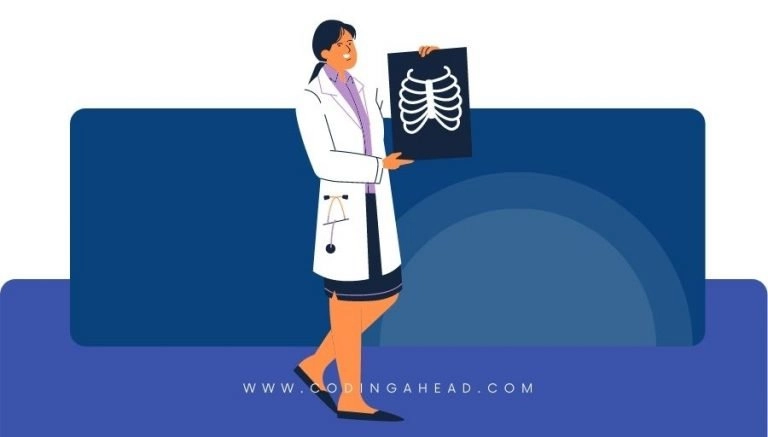CPT Code 78815 | Description, Guidelines, Reimbursement, Modifiers & Examples (2023)
CPT code 78815 falls under the Other Diagnostic Nuclear Medicine Procedures (AMA) category. Before initiating an active treatment plan, clinicians can use PET and CT scans, both standard imaging modalities, to assess the location and metabolic behavior of tumors or cancer in the body.
Introduction
In PET, the radiopharmaceutical decay will be measured using a positron camera (tomography). In addition, the degradation rate provides biochemical information about the tissue’s metabolism. This “fused” image offers a complete picture of the tumor’s location and growth and a better understanding of the tumor’s metabolic activity and location.
The “limited area” codes (78811 and CPT code 78815) may be used when only one body part is inspected, or the scan does not extend from the base of the head to the middle of the thigh. According to the CPT Assistant’s recommendation, “limited region” codes may be utilized for a full-body scan.
Scanners that use full-body codes examine the entire person, from the crown of the head to the sole or the calf (78813 and 78816). The most common type of melanoma scan is this one. If the scan does not cover the required area, the doctor should report it as a skull base to mid-thigh assessment (78812 or CPT code 78815).
Attenuation correction and anatomic localization are two of the most common uses of a CT scan in a tumor or brain cancer.
CPT code 78815 may measure cancer diagnosis and billing situation depending upon the cancer stage. The modifier used for the CPT code 78815 may also depend upon the cancer stage.
The procedure of a CT scan may be requested in addition to the PET/CT by the ordering physician on rare occasions. The imaging center and the doctor reviewing the results may submit separate CT and PET scan invoices under the following circumstances:
- Because of medical reasons, a CT scan is necessary for diagnostic purposes
- The treating physician orders a diagnostic CT scan
There is a separate CT acquisition for the diagnostic CT scan (data set). Clinical Examples in Radiology’s summer 2017 edition states that IV contrast and repeated CT scans are frequently required. The radiologist interprets the diagnostic CT scan uniquely. The diagnostic study’s clinical rationale will be included here.
Healthcare providers should “explain the clinical indication explicitly” for the diagnostic CT, emphasizing that this “should not be the same indication for the PET/CT scan, or if it is, the cause for the two examinations should be given,” according to the SNMMI.
The National Correct Coding Initiative (NCCI) guidelines procedure released by CMS includes a new policy on coding for diagnostic CT with PET/CT. When a diagnostic CT scan is performed on the PET/CT scanner, the physician must use a code from the 78811–78813 series.
A CT scan will not be required for this type of PET. Two possible modifiers can include the CT code to submit the diagnostic CT scan: 59 (Different Procedural Service) or XU (Unusual No overlapping Service). The appropriate CT code I will determine by the anatomy study.
Description of CPT Code 78815
The official description of CPT code 78815 is: “Positron emission tomography (PET) with concurrently acquired computed tomography (CT) for attenuation correction and anatomical localization imaging; skull base to mid-thigh.”
To file the claim, Medicare requires the PET scanning facility to have a copy of each patient’s medical record. The medical records must have the relevant data to be used in the medical procedure for cancer diagnosis.
For example, this data includes prior diagnostic procedures (such as cytopathology and surgical pathology reports, CT) and any PET scans performed at the facility, as well as their times, locations, and outcomes. In addition, if accessible, these records should include the patient’s PET scan prognosis and information regarding the clinician or facility where they got therapy or evaluation following the scan.
An ordering physician must send this information to the PET scan facility. Clinical care would range based on the condition severity of the cancer diagnosed. After therapy, PET will be covered for restaging to look for future residual illness recurrences or identify the severity of a known recurrence.
If the use of PET might potentially relocate one or more necessary medical imaging procedures and the information offered by such studies may be expected to be insufficient for the patient’s therapeutic management, then employing PET would be regarded as acceptable and required.
Clinical care would range based on the stage of a cancer diagnosis. After therapy, PET will be covered for restaging to look for future residual illness recurrences or identify the severity of a known recurrence.
If the use of PET might potentially replace one or more conventional imaging investigations, the information offered by such studies will be considered insufficient for the patient’s therapeutic management. Therefore, employing PET would be regarded as acceptable and required.
Scans for cancer staging and diagnosis are among the first to be used in the early stages of treatment. When a patient’s cancer has been “biopsy verified or strongly suspected based on another diagnostic testing,” a scan is considered an initial treatment approach. It may be used to determine the doctor’s next step. Screening scanners and preventive examinations for patients without symptoms may not be included in the first treatment plan. Medicare or other insurance plans do not cover PET screening. For one of the following reasons, the patient’s doctor must request a first treatment approach study in line with the NCD:
- They are deciding whether the patient is a suitable candidate for an invasive diagnostic or therapeutic procedure to pinpoint precisely where an invasive surgery will occur.
- When an anticancer treatment logically necessitates determining its anatomical extent.
Billing Guidelines
The PET does not include other diagnostic grounds or screening (examination of people who do not have specific symptoms) (testing patients without typical symptoms). In addition, PET tracking tumor response during the specified course of therapy is not covered when there is no change in treatment planned.
The CPT code 78815 or 78816 may typically be used when coding PET/CT images. Using Positron Emission Tomography (PET), a non-invasive imaging method, doctors may see how well various organ systems in the body are functioning metabolically and per fusing.
An intravenous injection of radiation-generating radioisotopes known as positrons will be utilized to create images. 2-[F18] fluoro-2-deoxy-D-glucose is the most commonly used radioactive tracer (FDG) for cardiac, neuropsychiatric, and oncological PET imaging.
Myocardial perfusion imaging uses N-13 and Rb-82 tracers in addition. Consequently, the four sets of medical necessity criteria will determine how these various tracers should be designated.
Its anatomical imaging competitors (like Computed Tomography (CT)) do not give functional images of pathophysiologic activity, while PET scanning does. Therefore, it is common to practice employing PET and CT scanners as a team.
The advantages of this dual technology include shorter imaging periods and automatic co-registration of CT (anatomical) and PET (metabolic) data. In addition, the QR modifier will be added to the procedure code.
It may confirm that the referring and billing provider properly evaluated the Medicare beneficiary (s). Providers can demonstrate the need for an FDG PET scan by collecting and storing the following information in the beneficiary’s medical file.
Modifiers
PET scans may code using a limited set of codes. PET and CT codes employ PI and PS modifiers. These variables reflect whether the disease is in its early stages or has progressed—PS and PI qualifiers (first stage) ( restaging).
It may advise that PET or PET/CT be used to guide the initial treatment strategy for tumors confirmed to be malignant by biopsy or are highly likely to be cancerous based on earlier diagnostic testing.
To gain a sense of the initial treatment plan for the tumor, add CPT codes 78608, 78811, 78812, 78813, 78814, CPT code 78815, or 78816 to your invoice for solid tumors. Patients with malignant tumors who require PET or PET/CT to guide their anticancer treatment plan will be provided with it if their treating physician believes it is necessary.
Modifier PS may add to all procedure codes indicated and paid with a cancer diagnostic code. Both modifiers will be used to bill Medicare for oncologic PET/CT imaging. In cases of recurrence following the completion of the first therapy, PET/CT imaging with the PS modifier is an effective tool.
The PI modifier guides the initial treatment regimen for tumors with a positive biopsy result or other diagnostic results indicating a high malignancy probability.
Reimbursement
Medicare requires the PET scanning facility to have a copy of each patient’s medical record for the reimbursement procedure. The medical records must have the relevant data to be used in any post-payment reviews.
These records must include basic information (age, gender, and height) and good patient histories to ensure the PET scan. In addition, prior diagnostic procedures (for example, cytopathology and surgical pathology reports, CT) and any PET scans performed at the facility, along with their times, locations, and outcomes, may be included in this data.
Example
The patient with brain cancer will need a PET scan of the brain and a PET/CT scan procedure. The torso study will use Procedure 78815 CPT code, and the brain investigation will use Procedure 78608 with modifier-59.
Because no other national program covers brain tumor investigations, the QR modifier may add to brain research if the facility participates in NOPR.)



